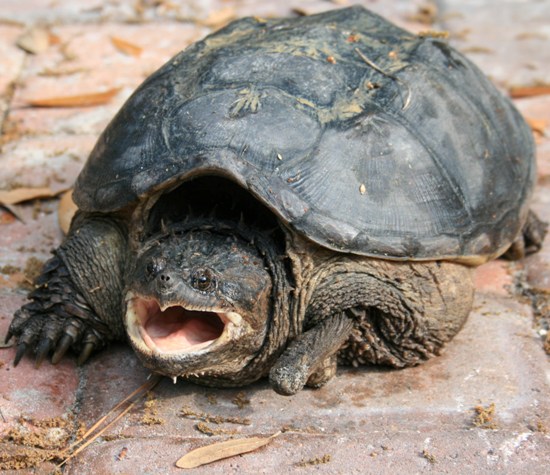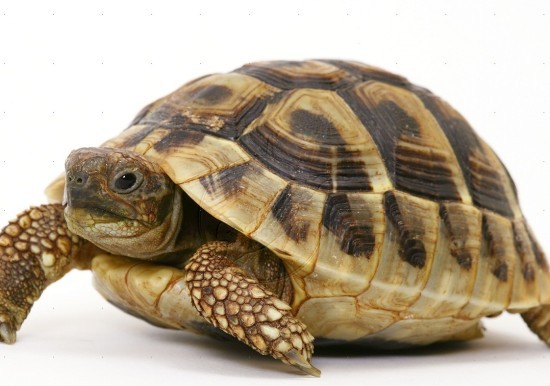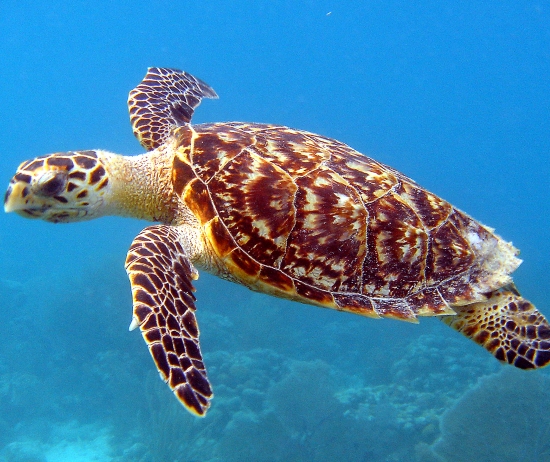Sea turtles, one of the most ancient creatures on the Earth are even found today and their species have been living for more than 110 million years as companions to the dinosaurs. The shell of sea turtles or “carapace” is adapted in a way that they can swim through the water. Â However, sea turtles are unable to retract their legs and head within the shell like the other turtles.
The common colours seen on sea turtles are greenish yellow, or sometimes black – it varies from one species to another. There are a total of seven species of sea turtles, amongst which six are already endangered under the threat of human interference due to activities like accidental capture and bycatch (entanglement in fishing gear), destroyed nesting and feeding sites, ocean pollution and poaching. Sea turtles as the name suggests are very well adapted to sea water but also need air for survival. Here are some very interesting facts about sea turtles –
Size and Weight
Their size varies greatly, depending upon species. The small Kemp’s Ridley weighs between 80–100 pounds, while the enormous leatherback, weighs more than 1,000 pounds.
Diet
Sea turtles mainly eat crabs, jellyfish, seaweed, sponges, shrimp, algae, snails, and molluscs.
Population
It’s somewhat very difficult to specify the exact count of sea turtles because the male and baby sea turtles usually do not return to shore once they reach the ocean. Therefore, it is difficult to keep track of them.
Adaptability
Green sea turtles stay under water for almost five hours even though the feeding dive duration can be of only five minutes or less. Their heart rate reduces slowly to conserve oxygen and there remains nine minutes interval between heartbeats.
Temperature of Water
Sea turtles usually dwell in warm and temperate waters all across the globe; their migration zones are miles in between nesting and feeding grounds. Most of the species of sea turtles follow long migrations, sometimes it can be as far as 1400 miles, and spans from their own beaches of their nests and feeding grounds.
Behaviour
The life of sea turtles are mostly spend in the water, and thus too much information is yet not gathered about their behaviour. By observing hatchlings and females, it is deduced that they leave the water to lay eggs and surprisingly, they will return to the same nesting grounds when the babies are born. Females come to the shore and dig out a nest with their back flippers, burying their eggs into that nest and return back to the ocean. After the eggs hatch, the young ones take almost one week time to come out of the nest. They usually emerge from eggs during dark hours.
Reproduction
Sea turtles mate below 85 degrees Fahrenheit (30ºC) during the months of March-October. However, these specifications also depend on the species. The gestational period is approximately 6-10 weeks. The eggs in one clutch vary between 70-190 eggs. Once the young turtles hatch out from the eggs they go into the ocean, however due to various obstacles for growth there are few who can survive till adulthood.
Migration
Sea turtles spend almost their entire lives in the ocean basins across the globe, their nesting zones are usually the tropical and subtropical beaches. Migrating long distances to feed, they often cross entire oceans. Some turtles from the species of loggerheads nest in Japan; while they migrate to Baja California Sur, Mexico. The species of Leatherbacks can withstand the coldest water temperatures (below 40ËšF) and found in Chile and also Alaska.
There are many more interesting facts about these creatures, but unfortunately these marine reptiles are under the threat of extinction. They are often hunted for shells and meat; while their eggs are also included in human diet. Few conscious measures and efforts can save these beautiful sea turtles for the coming generations.












